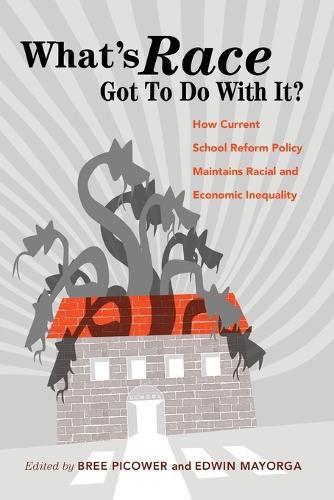Readings Newsletter
Become a Readings Member to make your shopping experience even easier.
Sign in or sign up for free!
You’re not far away from qualifying for FREE standard shipping within Australia
You’ve qualified for FREE standard shipping within Australia
The cart is loading…






This title is printed to order. This book may have been self-published. If so, we cannot guarantee the quality of the content. In the main most books will have gone through the editing process however some may not. We therefore suggest that you be aware of this before ordering this book. If in doubt check either the author or publisher’s details as we are unable to accept any returns unless they are faulty. Please contact us if you have any questions.
Within critical discussions of school reform, researchers and activists are often of two camps. Some focus their analyses on neoliberal economic agendas, while others center on racial inequality. These analyses often happen in isolation, continuing to divide those concerned with educational justice into It’s race! vs. It’s class! camps. What’s Race Got To Do With It? brings together these frameworks to investigate the role that race plays in hallmark policies of neoliberal school reforms such as school closings, high-stakes testing, and charter school proliferation. The group of scholar activist authors in this volume were selected because of their cutting-edge racial economic analysis, understanding of corporate reform, and involvement in grassroots social movements. Each author applies a racial economic framework to inform and complicate our analysis of how market-based reforms collectively increase wealth inequality and maintain White supremacy. In accessible language, contributors trace the historical context of a single reform, examine how that reform maintains and expands racial and economic inequality, and share grassroots stories of resistance to these reforms. By analyzing current reforms through this dual lens, those concerned with social justice are better equipped to struggle against this constellation of reforms in ways that unite rather than divide.
$9.00 standard shipping within Australia
FREE standard shipping within Australia for orders over $100.00
Express & International shipping calculated at checkout
This title is printed to order. This book may have been self-published. If so, we cannot guarantee the quality of the content. In the main most books will have gone through the editing process however some may not. We therefore suggest that you be aware of this before ordering this book. If in doubt check either the author or publisher’s details as we are unable to accept any returns unless they are faulty. Please contact us if you have any questions.
Within critical discussions of school reform, researchers and activists are often of two camps. Some focus their analyses on neoliberal economic agendas, while others center on racial inequality. These analyses often happen in isolation, continuing to divide those concerned with educational justice into It’s race! vs. It’s class! camps. What’s Race Got To Do With It? brings together these frameworks to investigate the role that race plays in hallmark policies of neoliberal school reforms such as school closings, high-stakes testing, and charter school proliferation. The group of scholar activist authors in this volume were selected because of their cutting-edge racial economic analysis, understanding of corporate reform, and involvement in grassroots social movements. Each author applies a racial economic framework to inform and complicate our analysis of how market-based reforms collectively increase wealth inequality and maintain White supremacy. In accessible language, contributors trace the historical context of a single reform, examine how that reform maintains and expands racial and economic inequality, and share grassroots stories of resistance to these reforms. By analyzing current reforms through this dual lens, those concerned with social justice are better equipped to struggle against this constellation of reforms in ways that unite rather than divide.